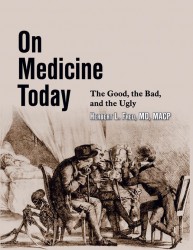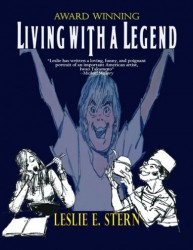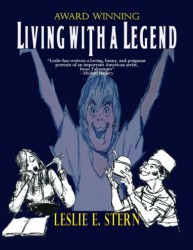Promoting, Marketing and Advertising your title

Book Review

Post Book Review
Guideline Rules for Creating a Book Review:
- Introduce the Book
- Tell about the book, but DO NOT give away the ending or any other spoilers.
- Discuss your favorite part of the book, Make a connection, or leave a hook.
- Construct a recommendation (Short: Blurb)
- Write an ending sentence for your review.
Book Review Instructions
At a Glance
Title: ___________________
Author: __________________
Publisher: _______________
Format: __________________
Hard Cover ISBN: _________
Paper Back ISBN: _________
eBook ISBN: ______________
Audiobook ISBN: __________
Number of pages: _________
Month and day of publication: January 2014
Example 1:
Write Better Reviews with a Book Review Template
February 9, 2012
See the checklist at http://www.mybookbag.net.au/book-review-template for more ideas of what to include here
How to write a book review for kids, so I wrote another article especially for kids (and their parents).
Writing book reviews can be an easy way for new writers to get some clips, or can be passion in itself. Either way, for the beginning reviewer, the task is much easier when a book review template is used. This organizes the review and keeps the thoughts and words of the writer on track. A template can be used for both fiction and non-fiction books in any subject area.
The steps involved in writing the review are not complex, so even a new writer should be able to follow them to provide a critical perspective on a written work. The review itself must make an argument. It is not a summary of the book but a commentary on it.
Through a book review, the writer creates dialogue with the author of the work and the audience reading the review. When writers create a book review, they may provide both positive and negative comment, pointing out where the work exemplifies and falls short in terms of organization, judgment, and knowledge.
Within the book review, the writer should clearly express an opinion of the work. The organization of this statement should follow basic academic writing by including a thesis statement that describes the purpose of the review, a body featuring supporting paragraphs, and a conclusion.
Reviews need not be lengthy to be considered adequate. In fact, most are quite succinct, rarely exceeding 800-1,000, with shorter reviews running from 250-450 words. All have several features in common, including a summary of book content (without giving away the end, if it is a work of fiction), critical assessment of this content, and a suggestion regarding whether the audience will appreciate the work.
Example 2:
How to write a book review:
1) Do not immediately read the book. Instead, begin by looking at the cover illustration, summary on the jacket, and subject category chosen by the publisher. Review the physical aspects of the book to identify whether the work is designed for a collector. Details gained during this step reveal the target audience.
2) Open the book, flip through it, and look at how the content is arranged. Identify how many pages and chapters it has, determine how large the paragraphs are, and quickly identify how much dialogue is included in the content. This provides information regarding the structure and readability of the book.
3) Develop an outline for note-taking that includes questions to answer within the review. For example, if the book is a classic work, the review should explain what makes it so. Use the review to support or deny claims from the book introduction or summary such as whether the work really does represent the thoughts of a generation which it is representing. These arguments logically develop the review thesis.
4) Read the book, paying attention to not only the words but also the experience of reading. This can be challenging, so stay focused. Write down what captured the most attention, what characters were most likeable and why, and at what points the book seemed to drag.
5) After a complete read, go back and review the book, taking notes based on the outline developed. Describe what took place in each chapter and what effect it had on you as the reader. Identifying what captured attention and maintained it from one part of the book to another is important because it sets the framework for the remainder of the review. Explain the effect of the book, how it was achieved by the author, and the role each character played in the work. Then, focus on relationships like those between the content and form and between the characters. Not all of this will end up in your final book review, but it will help you in the process of writing it.
6) Summarize the book in a clear but concise manner, but do not give away the ending, or other “spoliers”! This is the easy part and it serves as the basis for the review. Many reviewers stop after this step, not realizing that only half of their work is done.
7) Now comes the difficult part: forming opinions about the work and capturing them in writing. Determine whether the book was good or bad and use your written notes to support this view. By explaining why certain aspects of the work were good or bad, your opinion becomes more persuasive. Provide specific examples while passing judgment.
8) Explain the book in relation to other written works. Put it in context in terms of subject categories like fiction and non-fiction and break these down into science fiction, romance, nature, fantasy, or another sub-category. Relate the book to others that fall into the same classification, using this to explain the book as well as your opinion of it. Tell readers whether it is a groundbreaking work or imitation of another book. In addition, provide some background on the author, including how many other books the person has written.
9) Tie everything together by restating the review thesis and providing a final judgment of the book. New supporting ideas should only be introduced if they extend the logic of the thesis and go beyond the content of the book to provide food for thought.
10) Read the review and make sure it explains each primary aspect of the book. Identify the target audience for the review and ensure that the content is appropriate. For example, if those reading the review are new to this type of book, some additional background may need to be provided. Add and remove details as necessary, re-read to make sure the review is on target, and proofread several times.
Some writers feel uncomfortable preparing a book review because they have never written a book. Though writers need not be a Nobel Prize winning author or an expert in the particular subject, they must position themselves as knowledgeable for the audience reading the review. On the other hand, if you are asked to review a book in an area you are not familiar with, you always have the option of saying no.
If you choose to go ahead, you should make it clear at the outset that you are reviewing from the point of view of an outsider to the topic – those in the know will quickly see your inexperience if you try to do anything else. Insightful observations of the book are the foundation of a well-reasoned judgment of the work. The goal is to express opinions tactfully and support these with concrete evidence.
Opinions and recommendations are the focus of a book review and following the steps above will help you integrate these into the evaluation. The book summary should be a minor aspect of the review and the arguments made should be bolstered by specific details. These judgments should also be tied together to create an overall evaluation that supports the thesis statement of the review.
Use the book review template below to help you structure your thoughts.
Example 3:
Writing a good book review is an art in and of itself, with the lofty goals of entertaining the reader, offering thoughtful opinions on the value of the book, and backing those opinions up with careful analysis. The best book reviewers are well respected professionals, whose opinions guide curious readers to new books that they’ll love but would not have otherwise picked up, or help them steer clear of those books whose covers and titles catch the eye but whose content ultimately disappoints. Book reviews are also an effective assignment for teachers who want their students to learn the skills of reading. It can help students focus on comprehension and critical thinking. Or maybe you are a graduate student trying to assess the breadth of existing research in your field and you want to do a better job reviewing the literature while you read it. Whether you are writing a review for school or you are interested in reviewing books professionally, the fundamentals of the book review are the same, and taking the time to consider the template of a book review before you begin reading can help you focus on and extract the information that will be essential to writing a useful and entertaining book review.
Let’s begin by describing what a book review is and isn’t. A book review is not a summary or synopsis. You will be describing the contents of the book to some extent, but the goal of a book review is not to explain what the book is about but to evaluate its quality and significance. Neither is a book review an in-depth essay about some specific aspect of the book. The difference between and essay and a review is that a review offers an overview of the book so that the reader of the review can decide whether they want to read the book. An essay however is more specific, it delves deeply into one particular aspect of the book and instead of offering any opinion of the quality or value of the work in its entirety, an essay attempts to understand and analyze something that the author was saying. In many ways both essays and reviews work with the same materials, such as themes, character development, genre, authorial intent, but the difference is in what they are trying to convey about the book, essays are specific, reviews are general. Fundamentally a review is an opinion on whether you think other people should read a book, your reasons why or why not, and some context so your reader knows what this book is about.
Let’s look at a basic template for a writing a book review and then we’ll discuss the various key elements in greater detail so that you can keep them in mind while reading.
Preview to the Review
– The introduction is the most structured part of a review, it always mentions the title and author of the book, gives some brief characterization of the book and offers some preliminary analysis that will be further explained in the rest of the review.
– It often makes the best sense to write the introduction after you have written the rest of the review. It can be difficult to introduce the review if you don’t yet know what is in it.
– The first sentence of a review may be the last sentence you write because it should be a enticing, informative and relevant to the opinions you will present in the review that follows it. At the very least it should be the last thing you edit before considering the review completed, in order to make sure that it does its job.
– Key elements: a) Book title, b) Author’s name, c) catchy first sentence, d) description of books contents, e) preview of the opinions in the review.
Saying your Piece
– The body of the review is where you have a chance to make your opinions about the book known and support them with your analysis.
– It is in this section that we consider the various qualities of the book and benefit most from having considered the basic questions that a reader asks of any book.
– This section can be long or short depending on the audience of your review. If this review is for your teacher, they may have specified a specific length. Generally, the body is the longest section of a review, although some reviews have nobody at all and are merely an introduction; these are generally called blurbs and don’t require any analysis of the book, only an opinion.
– The general format of a body paragraph will first offer an opinion about one of the basic questions, then support the opinion with some analysis of the qualities related to the basic questions. This can be repeated in order to discuss several of the basic questions or it can be used once in the first paragraph with subsequent paragraphs offering further analysis of the same topic.
– Key Elements: a) basic questions, b) opinions, c) qualities and analysis
Make ‘em Remember
– As with any conclusion, this is the part where most of the important information has already been laid out and all that remains is reinforcing your opinions, and impressing your reader with one last closing remark.
Key Elements: a) reinforcing opinions, b) closing remark
Let’s take a look at the key elements mentioned in the template for writing a review. Some of these elements are important to keep in mind while you are reading the book and will make formulating your opinions and writing the review much easier.
Basic questions: The fundamental aspects of a story (or non-fiction)
The basic questions are what any reader is trying to learn by reading a book, such as: what the author is saying, how they are saying it, and why they are saying it. Here’s a list of some of the most important things to consider while reading:
- The Plot (or idea): What is the setting and era of the book, what is the central conflict, who helps the central conflict towards a resolution, who prevents the resolution of the conflict, is the central conflict familiar or unusual? Is it symbolic or literal? Does the author make the plot obvious or is it hard to follow, why? What is the outcome of the conflict, or the central thesis of the idea, is it success or failure and what does the outcome say about the author’s opinion of the central conflict as a quest?
- The Characters (of topics): what are the goals, quests, values, skills, motivations, and weaknesses of the characters? Do they develop or change? Do they represent a type of person or class of people, do they fit into society or are they outcasts? Consider how the author is portraying them and why? Do you feel sympathetic or envious or superior to them and why? For nonfiction take account of how the author characterizes the topics, favorably or unfavorably, are the ideas well explained or simply stated as fact?
- Themes: Themes are societal sized topics, issues such as courage, hate, love, violence, treachery, isolation, devotion, spirituality, ambition, class, culture, and death. A work can have many themes and you can discover the themes by analyzing the plot. Once you have identified the theme then you can identify the thesis, which is: what the author is saying about the theme. If the theme is hatred and all the characters end up unhappy, then the thesis might be that hatred leads to unhappiness.
- Qualities and analysisOnce you have read the book and contemplated the basic questions, it is time to assess the qualities of the book and analyze them. The analyzing the qualities of the book is how your form opinions about the book. Are the characters or topics well developed, do they seem real, is the information trustworthy or unbelievable, are the themes interesting, do they make you think, or are they dull. The analysis involves justifying why you assess the qualities the way you do.
- Author’s nameTake the time to look up the author on Google, knowing about the context of their life will give some valuable insights into the basic questions of the book. Pay attention to when they lived and the historical events that affected them, their social standing and cultural background, the scope of their career and success during their life. This sort of insight is not only helpful when reading, it also makes for interesting analysis that you can share in your review.
- Book TitleThe author often makes a strong point in the choice of title. Sometimes it is as simple as trying to intrigue the intended audience, but even then the title draws attention to what basic questions the author considered most interesting or important. If you are, for instance, reviewing Jane Austen’s Pride and Prejudice then you already have a very good idea of the central themes of the story.
- Description of book’s contentsDon’t give the whole story away, but a brief description of the setting, central ideas, and themes of the book is essential to helping your reader decide if the book you are reviewing is of interest to them.
- OpinionsDid you like the book? Can you relate to the characters? did they open your eyes to an experience you’d never thought of? Should everyone read this book? Should no one read this book? Why? Your opinions are supported by your analysis of the qualities of the book as they relate to the basic questions of the reader.
- Preview of opinionsEssentially your opinions boil down to whether this was a worthwhile book to read. Preview your opinions by making your bottom line recommendation known (to read or not to read), and give a sample of the analysis you support this conclusion with.
- Catchy first sentenceAsk an unusual question, offer a plot teaser, contemplate the themes, hint at your opinion of the book, whatever you decide to do, the catchy first sentence is your opportunity to make someone want to read your review. What makes you want to read a review?
- Reinforcing opinions
- Ideally you will not merely restate the opinions you developed earlier, but will find a way to draw them all together in order to make a recommendation for other potential readers and offer some idea of what the author’s intended audience was.
- Closing remarkThe game is over, you’ve made all your arguments and you’ve got one final sentence to convince the audience of your opinions and expertise. There’s a lot of leeway for the last sentence, you can draw on the universal themes as presented in the book, make some last jab at the book’s clichés, reflect on insights gained from an unexpected subject matter; whatever it is, make it count.
- Now you’ve got the template for writing a review and the fundamentals of reading a book so that you can write the best review possible. The purpose of a review is to convince the reader that your opinion of the book is the same opinion they will have if they read it. You are either enticing them or warning them, and therefore it is important to consider how people are convinced. The reader will be affected most by your ethos (trustworthiness), logos (expertise), and pathos (emotional sincerity). Your ethos and logos will be products of how clearly and convincingly explain yourself, so it is essential that you take the time to proofread, and your pathos will be conveyed by well-considered and thoughtful your opinions of the book are. Book reviews follow some basic structure but it is a chance for creativity as well, a chance to express your opinions in an entertaining way so that someone else can benefit from your consideration of the book.


Mina Mauerstein Bail has written a large-format chapter book series for young readers
By Mina Mauerstein Bail
Reviewer by Bianca Schulze


Recommended Readership: All physicians at all stages of their careers, particularly those physicians involved in medical education.
By Leo A. Gordon
Reviewer by Herbert L. Fred, MD, MACP


By reading Leslie’s book I’m inspired again by the story of a truly unique American whose well-lived life will hearten us all.
By Leslie E. Stern
Reviewer by Sander Schwartz


“I smiled through every page of Living With A Legend”
By Leslie E. Stern
Reviewer by Michael Mallory


A wonderful read with insight into a great man and artist!
By Leslie E. Stern
Reviewer by J. Dougherty


To paraphrase Iwao himself, Living With A Legend was not written through the hands, but through the heart.”
By Leslie E. Stern
Reviewer by Susan Ann Roemer